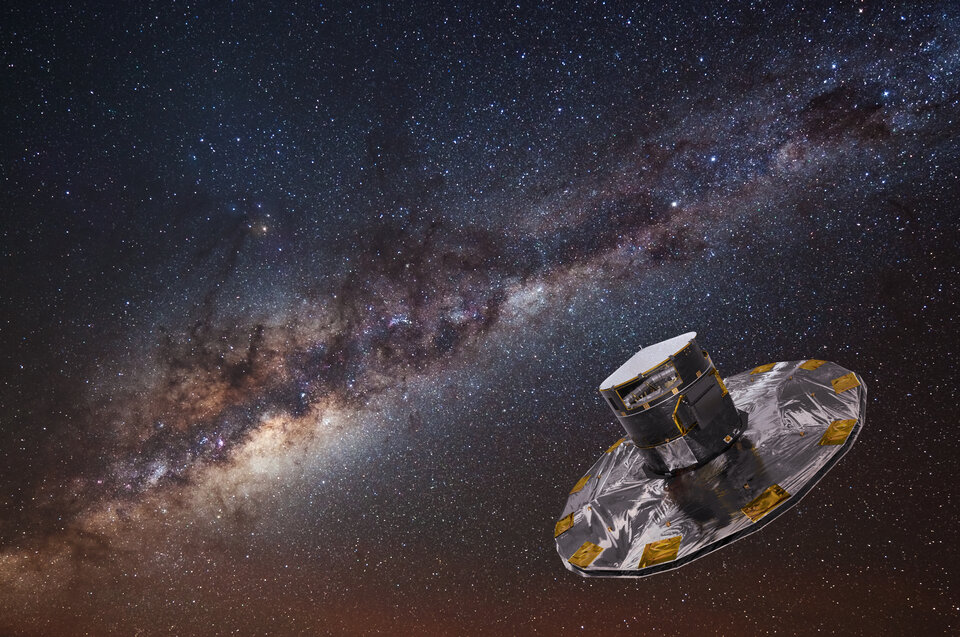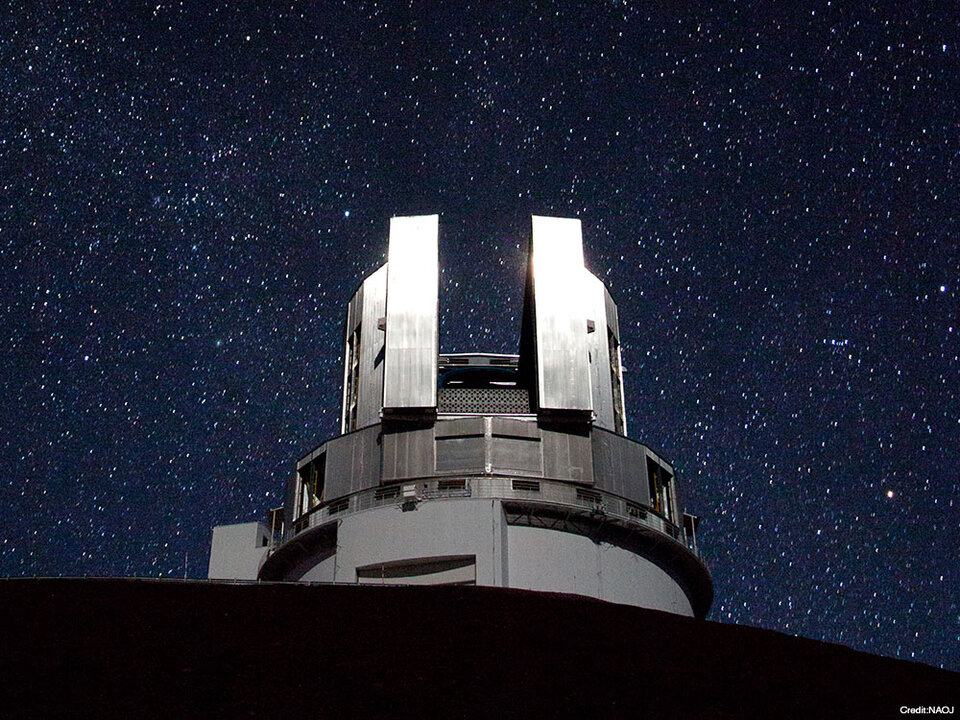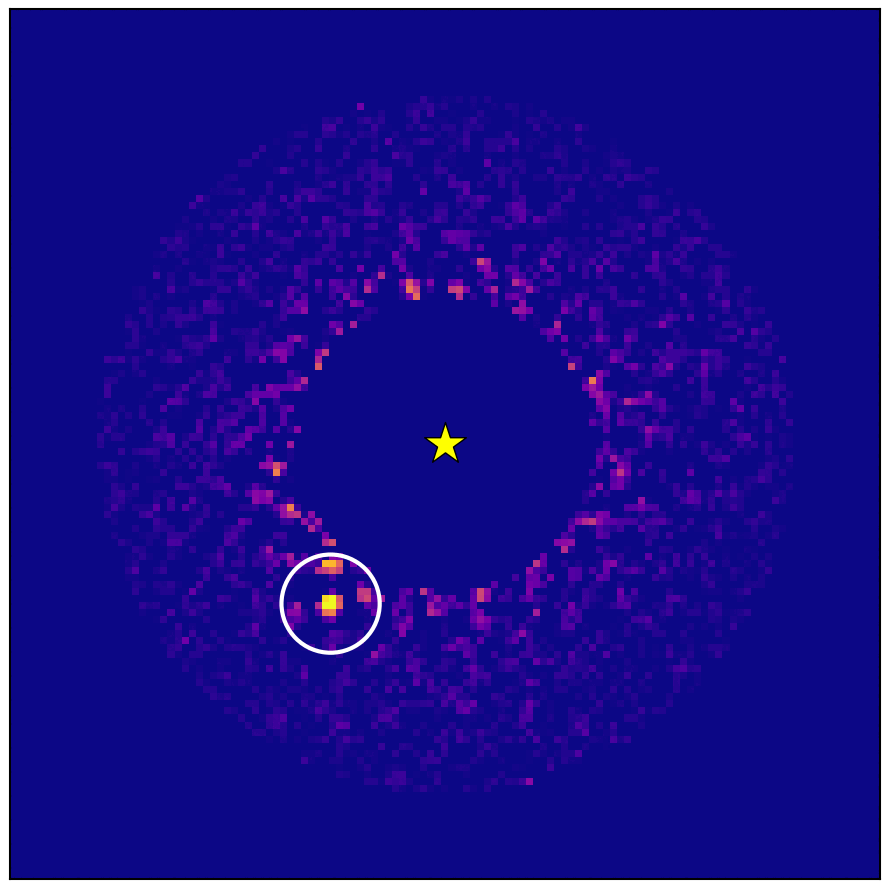Wobbling star found in Gaia-Hipparcos data confirmed to host exoplanet
Data from ESA’s star-mapping Gaia spacecraft has allowed astronomers to image a gigantic exoplanet using Japan's Subaru Telescope. This world is the first confirmed exoplanet found by Gaia’s ability to sense the gravitational tug or ‘wobble’ a planet induces on its star. And the technique points the way to the future of direct exoplanet imaging.
When it comes to detecting planets around other stars, known as exoplanets, astronomers have a variety of methods at their disposal. These techniques fall into two broad categories: direct and indirect. Both have advantages and drawbacks.
Historically, most exoplanets have been found by indirect methods. This means that planets are inferred to exist because of the effect they have on their parent star. Whereas in direct imaging, a telescope actually sees the planet.
While astronomers have detected more than 5000 exoplanets using indirect means, only about 20 have been imaged directly. This is because for the planets to be visible with our current level of technology, they must be widely separated from their parent star and be much more massive than Jupiter, the largest planet in our Solar System.

Because nature does not make many of these types of planets, astronomers would like to know exactly where to look. Most direct imaging searches are ‘blind’, meaning that they simply target stars based on their age and distance and hope that a planet will be seen. Out of hundreds of stars surveyed in this way, only a handful have yielded planets.
“We wanted a different strategy,” says Thayne Currie, National Astronomical Observatory of Japan (NAOJ), Hilo, Hawaii and the University of Texas-San Antonio. In his attempt to load the dice in favour of success, he and colleagues turned to the Gaia mission to look for stars that literally wobbled on the sky.
In particular, they used the Hipparcos-Gaia Catalogue of Accelerations. This catalogue combines data from Gaia with that from ESA’s previous star mapping mission, Hipparcos, to provide a 25-year baseline for comparing the precise positions of stars. Measuring the position of a star on the sky is known as astrometry. From this database, the team identified a number of stars that appeared to change position on the night sky in a way that suggested they were each orbited by a giant planet.

Next they turned to NAOJ’s Subaru Telescope on Mauna Kea, Hawaii, and took observations in July and September 2020, and May and October 2021. They used the telescope’s Subaru Coronagraphic Extreme Adaptive Optics (SCExAO) instrument coupled to the Coronagraphic High-Resolution Imager and Spectrograph (CHARIS) instrument – and they quickly caught an exoplanet.
The newly discovered planet is called HIP 99770 b. It is about 16 times the mass of Jupiter in our own Solar System, and orbits a star that is nearly twice as massive as the Sun. Even though the planet’s orbit is more than three times larger than Jupiter’s orbit around the Sun, it receives nearly the same amount of light as Jupiter because its host star is far more luminous than the Sun.
The success of finding this planet also has wider implications.
“It provides a new path forward to discovering more exoplanets, and characterising them in a far more holistic way than we could do before,” says Thayne.
This is because direct and indirect methods of detection provide different information about a planet. Direct imaging can provide excellent constraints on a planet’s temperature and composition. Meanwhile, indirect methods deliver excellent measurements of a planet’s mass and orbital characteristics, especially when they are combined with measurements of the planet’s position from direct imaging.

The combination of Gaia data with the images from Subaru gives astronomers the best of both worlds. And this is just the beginning.
Now that astronomers know that the planet is there and visible, other telescopes can take up the job of further analysing its light. “The discovery of this planet will spawn dozens of follow-on studies,” says Thayne.
And there will be more discoveries to come from this method. HIP 99770 was one of the first stars observed from the Gaia candidates. Presently, Thayne and his colleagues are analysing data from around 50 other stars and what they’ve seen make them promise that more discoveries are in the pipeline.
“[HIP 99770 b] is a proof of concept of this new strategy for finding imageable planets that will get far better in the next five years,” he says.

This method of targeting stars for exoplanet discovery is going to accelerate. This is because Gaia’s fourth data release (DR4), which will be based on 5.5 years of data (nearly double the baseline for DR3) will make it much easier to spot which stars are wobbling.
Ultimately, this combined approach will allow us to target other Earths. Finding a planet like our own remains an ultimate goal for astronomers. Such a planet will be much closer to its star and so will spend a large amount of time either in front or behind that star, making it impossible to see.
“This is sort of a test run for the kind of strategy we need to be able to image an earth. It demonstrates that an indirect method sensitive to a planet’s gravitational pull can tell you where to look and exactly when to look for direct imaging. So I think that's really exciting,” says Thayne.
Direct Imaging and Astrometric Detection of a Gas Giant Planet Orbiting an Accelerating Star by Thayne Currie is published online on 13 April 2023 and in the print issue of Science on 14 April 2023.



